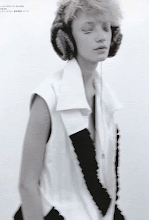Then Rei Kawakubo assured Ando’s worry about function of design from the view of her own conception of clothing design. These two Japanese architect and fashion designer born in 1941 and 1942. The same age of them results in a similar environment of growing, living and the receiving of western aesthetics, which makes their philosophy have quite similarity. Kawakubo’s former collections which astonished the Europe broke the pursuit of wearable philosophy in the mainstream fashion design group. Differing from Vivienne Westwood’s rebellion to social ideology, Kawakubo adopted the law of monochrome and decontructed the traditional cutting of clothing, which can be said she challenged the clothing industry beginning in the interior of clothing, the spiritual core of clothing. It isn’t so much that her works are the representation of her personality as that through her works she questiones if traditional esthetics value restricts the more possibilities of design. What Rei Kawakubo did is to return the soul to clothing, the soul once constrained under the functional shackles. In the way of Deconstrucionism, the contribution of Kawakubo is not only this, also can be seen on the influence on the later designers, including Ann Demeulemeester, Martin Margiela, Hussien Chalayan. They insist on the design of monochrome and make a lot of porgresses in the way of demonstrating the delicateness of the clothing itself.
Church On the Water
Tadao Ando
1988/Tomamu
Sweater and skirt,
Autumn/Winter 1995,
by Rei Kawakubo for Comme des Garçons Noir.




No comments:
Post a Comment